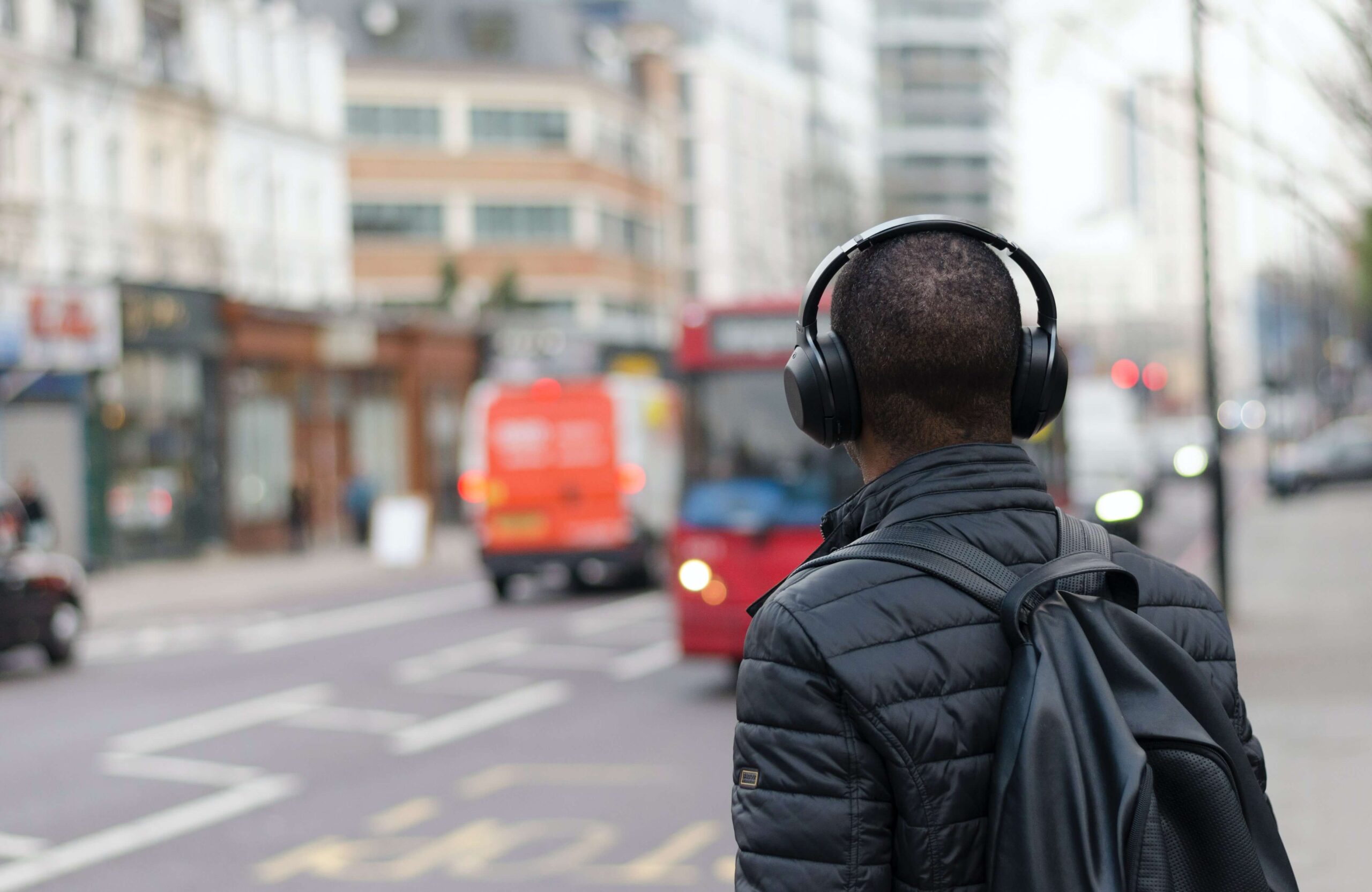[et_pb_section fb_built=”1″ admin_label=”section” _builder_version=”3.22.3″ background_color=”#ffffff” custom_padding=”1px||0px|||” custom_padding_tablet=”||0px|” transparent_background=”off” padding_mobile=”on” make_fullwidth=”off” use_custom_width=”off” width_unit=”on”][et_pb_row padding_mobile=”on” column_padding_mobile=”on” admin_label=”row” _builder_version=”3.25″ background_size=”initial” background_position=”top_left” background_repeat=”repeat” custom_padding=”||0px|” make_fullwidth=”off” use_custom_width=”off” width_unit=”on”][et_pb_column type=”4_4″ _builder_version=”3.25″ custom_padding=”|||” custom_padding__hover=”|||”][et_pb_text _builder_version=”3.27.4″ text_font=”PT Sans|on|||” text_text_color=”#bcbcbc” text_letter_spacing=”2px” background_size=”initial” background_position=”top_left” background_repeat=”repeat” text_orientation=”center” module_alignment=”center” custom_margin=”||0px|” custom_padding=”||0px|” use_border_color=”off” border_color=”#ffffff” border_style=”solid”]
TO LEARN
[/et_pb_text][et_pb_text _builder_version=”3.27.4″ text_font=”PT Sans||||” text_text_color=”#1d1d1d” text_font_size=”72″ text_line_height=”1.1em” background_size=”initial” background_position=”top_left” background_repeat=”repeat” text_orientation=”center” max_width=”660px” module_alignment=”center” custom_margin=”18px||69px|||” text_font_size_tablet=”52″ text_font_size_phone=”” text_font_size_last_edited=”on|desktop” use_border_color=”off” border_color=”#ffffff” border_style=”solid”]
IELTS Exam: Prepare With Our Top 11
Grammar tips
[/et_pb_text][/et_pb_column][/et_pb_row][/et_pb_section][et_pb_section fb_built=”1″ _builder_version=”3.22.3″ background_color=”#f7f7f4″ width=”100%” min_height=”3180px” custom_margin=”||312px|-14px||” custom_padding=”0px|0px|0px|10px||” custom_padding_tablet=”0px|||” transparent_background=”off” padding_mobile=”on” make_fullwidth=”off” use_custom_width=”off” width_unit=”on”][et_pb_row padding_mobile=”on” column_padding_mobile=”on” admin_label=”row” _builder_version=”3.25″ background_size=”initial” background_position=”top_left” background_repeat=”repeat” width=”25%” max_width=”620px” custom_padding=”0px|||” make_fullwidth=”off” use_custom_width=”on” width_unit=”on” custom_width_px=”620px”][et_pb_column type=”4_4″ _builder_version=”3.25″ custom_padding=”|||” custom_padding__hover=”|||”][et_pb_image show_bottom_space=”off” align=”center” align_tablet=”center” align_phone=”” align_last_edited=”on|desktop” _builder_version=”3.23″ custom_margin=”-26px|||||” use_border_color=”off” border_color=”#ffffff” border_style=”solid” animation=”off” sticky=”on”][/et_pb_image][et_pb_text _builder_version=”3.27.4″ text_font=”PT Sans||||” text_text_color=”#ff7f45″ text_font_size=”18″ text_line_height=”1.4em” background_size=”initial” background_position=”top_left” background_repeat=”repeat” text_orientation=”center” module_alignment=”center” custom_margin=”14px||0px|” use_border_color=”off” border_color=”#ffffff” border_style=”solid”][/et_pb_text][et_pb_text _builder_version=”3.27.4″ text_font=”PT Sans|on|||” text_text_color=”#363636″ text_font_size=”17px” background_size=”initial” background_position=”top_left” background_repeat=”repeat” text_orientation=”center” module_alignment=”center” custom_margin=”-65px|||||” use_border_color=”off” border_color=”#ffffff” border_style=”solid”]
18 October 2019
[/et_pb_text][/et_pb_column][/et_pb_row][et_pb_row padding_mobile=”on” column_padding_mobile=”on” admin_label=”row” _builder_version=”3.25″ background_size=”initial” background_position=”top_left” background_repeat=”repeat” width=”82.7%” max_width=”620px” custom_margin=”|auto|-25px|auto||” custom_padding=”0px|||0px||” make_fullwidth=”off” use_custom_width=”on” width_unit=”on” custom_width_px=”620px”][et_pb_column type=”4_4″ _builder_version=”3.25″ custom_padding=”|||” custom_padding__hover=”|||”][et_pb_text _builder_version=”3.27.4″ text_font=”Raleway||||||||” text_text_color=”#363636″ text_font_size=”17px” text_line_height=”1.4em” background_size=”initial” background_position=”top_left” background_repeat=”repeat” max_width=”620px” custom_margin=”40px||0px|” text_font_size_tablet=”” text_font_size_phone=”” text_font_size_last_edited=”on|tablet” use_border_color=”off” border_color=”#ffffff” border_style=”solid”]
You have to be equipped with a good knowledge of grammar if you want to get a higher band in your IELTS exam.
It may not be a focus in the examination, but it is one of the things they will grade you on.
To be specific, these are the things your IELTS score will be based upon:
IELTS WRITING:
Task Achievement / Response
Coherence and Cohesion
Lexical Resource
Grammatical Range and Accuracy
IELTS SPEAKING:
Fluency and coherence
Lexical Resource
Grammatical Range and Accuracy
pronunciation
As you can see, grammar makes up a quarter of each part.
Your knowledge in grammar will be of so much help for the enhancement of your four macro skills, namely: reading, writing, speaking and listening. These skills are important for you to understand what the other person is trying to say and respond accordingly.
To help you learn about grammar, we have prepared a set of rules you have to remember and understand.
[/et_pb_text][et_pb_image src=”https://oneclickclass.com/wp-content/uploads/2019/10/alexis-brown-omeaHbEFlN4-unsplash-1.jpg” align_tablet=”center” align_phone=”” align_last_edited=”on|desktop” _builder_version=”3.23″ width=”106.3%” custom_margin=”|||-20px||” custom_padding=”45px|||7px||”][/et_pb_image][/et_pb_column][/et_pb_row][et_pb_row padding_mobile=”on” column_padding_mobile=”on” admin_label=”row” _builder_version=”3.25″ background_size=”initial” background_position=”top_left” background_repeat=”repeat” max_width=”620px” custom_padding=”17px||0px|||” make_fullwidth=”off” use_custom_width=”on” width_unit=”on” custom_width_px=”620px”][et_pb_column type=”4_4″ _builder_version=”3.25″ custom_padding=”|||” custom_padding__hover=”|||”][et_pb_text _builder_version=”3.27.4″ text_font=”Raleway||||||||” text_text_color=”#363636″ text_font_size=”17px” header_font=”||||||||” header_2_font=”||||||||” header_2_font_size=”25px” background_size=”initial” background_position=”top_left” background_repeat=”repeat” max_width=”620px” min_height=”542px” custom_margin=”-35px||-124px|-18px||” custom_padding=”29px|||||” text_font_size_tablet=”” text_font_size_phone=”” text_font_size_last_edited=”on|tablet” use_border_color=”off” border_color=”#ffffff” border_style=”solid”]
1. The simple tense
The Simple tense is used to talk about general, permanent or repeated actions.
For example:
“I often watch films.”
In this example, our verb is watch and it is in the present tense. The verb is used to describe something the speaker habitually does.
2. Continuous tense
The Continuous tense is used for:
USE 1: Actions that are happening at the same time as speaking.
For example:
“I am watching a film.”
In this example, the verb watching is in the present continuous tense. The verb here is used to show continuity. It is stating that the speaker is currently watching a film.
USE 2: If you want to talk about actions that are temporary.
Compare these sentences:
- “I usually take the train to work.”
- “This week I’m taking the bus to work because the train drivers are on strike.”
The first is a habitual situation, but second is a temporary situation so we use the continuous tense.
[/et_pb_text][/et_pb_column][/et_pb_row][et_pb_row _builder_version=”3.25″ custom_padding=”105px|||0px||”][et_pb_column type=”4_4″ _builder_version=”3.25″ custom_padding=”|||” custom_padding__hover=”|||”][et_pb_text _builder_version=”3.27.4″ text_font=”||||||||” text_font_size=”17px” header_font=”||||||||” header_2_font=”||||||||” header_2_font_size=”25px” min_height=”836px” custom_margin=”|||-15px||” custom_padding=”0px|||0px||” border_width_top=”2px”]
3. Simple Past and Present Perfect
Simple Past Tense is used for actions that took place in the past and have no connection whatsoever to the present or the future.
Take a look at this conversation:
A: “Hey, I saw the movie you were talking about.”
B: “Really? That’s good to know! I love that movie.”
In this example, the speaker saw the movie at a specific time in the past.
However, if you intend to talk about things that happened in the past and you don’t give a specific time, then you should use the Present Perfect Tense.
For example:
A: “The first Iron-Man movie will always be my favourite.”
B: “Same here! I have seen the movie three times.”
In this example, it shows that the speaker had seen the movie, but at an unknown time in the past. The time doesn’t really matter because the emphasis is on the fact that he had seen the movie; unlike in the simple past, where the emphasis is on the time of the action.
These rules will be of so much help for your IELTS Speaking Part 1. You will be asked questions about yourself, so it is essential that you know which tense and aspect for you to get your point across the other person.
[/et_pb_text][/et_pb_column][/et_pb_row][et_pb_row padding_mobile=”on” column_padding_mobile=”on” admin_label=”row” _builder_version=”3.25″ background_size=”initial” background_position=”top_left” background_repeat=”repeat” width=”92%” max_width=”620px” custom_margin=”26px|69px|26px|auto|true|” custom_padding=”10px|0px|0px|8px||” make_fullwidth=”off” use_custom_width=”on” width_unit=”on” custom_width_px=”620px”][et_pb_column type=”4_4″ _builder_version=”3.25″ custom_padding=”|||” custom_padding__hover=”|||”][et_pb_image src=”https://oneclickclass.com/wp-content/uploads/2019/10/adult-blur-books-261909-1.jpg” align_tablet=”center” align_phone=”” align_last_edited=”on|desktop” _builder_version=”3.23″ width=”99.4%” custom_padding=”29px|||||”][/et_pb_image][et_pb_text _builder_version=”3.27.4″ text_font=”||||||||” text_text_color=”#363636″ text_font_size=”17px” header_font=”||||||||” header_2_font=”||||||||” header_2_font_size=”25px” min_height=”622px” custom_margin=”51px|||||” custom_padding=”||40px|30px||” border_width_bottom=”2px”]
4. Passive Voice
You should use the Passive Voice in IELTS if you want to sound more formal or objective.
This is formed by using the verb “to be”, plus the past participle of the action. (write-written; ring-rung; choose-chosen)
For example:
“There are papers to be submitted before the end of January.”
In this example, we have the verb “to be” and the past participle of the verb “submit”, which is “submitted”.
“Six students were chosen to represent the country for this year’s International Mathematical Olympiad.”
With this one above, we have the past tense of the verb “to be” which is “were”, plus the past participle “chosen”.
This is useful for your IELT S exam especially when talking about reports and other things that would require a formal tone.
[/et_pb_text][et_pb_text _builder_version=”3.27.4″ text_font=”||||||||” text_text_color=”#363636″ text_font_size=”17px” header_font=”||||||||” header_2_font=”||||||||” header_2_font_size=”25px” min_height=”379px” custom_margin=”54px||51px|||” custom_padding=”17px|||31px||” border_width_bottom=”2px”]
5. Modals
You might want to use modal verbs in IELTS to express permission, obligation, degrees of certainty, etc. Modals are used quite frequently both in speaking and writing. Therefore, learning these will really improve your writing and speaking in IELTS.
Can expresses possibility, ability, and permission.
- “Smoking can be lethal.”
- “I can lift 200 pounds easily.”
- “Can I borrow your car?”
Could, May, and Might express:
1. PROBABILITY: they refer to actions that are about 50% certain.
- “Your Uncle may arrive today.”
- “We might be a bit late.”
- “We could have a chance of winning.”
2. PERMISSION:
- “Might I excuse myself for a moment, please?”
- “Could I borrow your car?”
Must and Should express:
1. OBLIGATION: should is lighter than must.
- “You must finish this project this afternoon.”
2. CERTAINTY: You think it is very certain/probable
- “He must be late because of the traffic.”
- “You must be excited to go on holiday after working so hard.”
[/et_pb_text][et_pb_text _builder_version=”3.27.4″ text_font=”||||||||” text_text_color=”#363636″ text_font_size=”17px” header_font=”||||||||” header_2_font=”||||||||” header_2_font_size=”25px” custom_margin=”||47px|||” custom_padding=”||52px|32px||” border_width_bottom=”2px”]
6. ‘The’
The article “the” is used to refer to specific nouns.
For example:
- “I want to buy a new car.”
- “I want to buy the car we saw the other day.”
The 2nd sentence refers to a specific car.
“The” is also used to refer to something that is unique, for example, the Internet, the Sun, the moon. You should also use it if there is only one of something in a certain area, for example, the government or the British embassy.
- It is an undeniable fact that the Internet is really taking over this generation.
- The school’s renovation is funded by the government.
- Barrack Obama is the first Black-American president of the USA.
[/et_pb_text][et_pb_text _builder_version=”3.27.4″ text_font=”||||||||” header_font=”||||||||” header_2_font=”||||||||” header_2_font_size=”25px” custom_padding=”|||35px||”]
7. To + Infinitive
People often get confused when to use the gerund and when to use to + infinitive. This is so important for you to sound natural when speaking in IELTS.
We use to + infinitive after the following verbs:
learn how to/ would like to/ want to/ seem to/ refuse to/ promise to/ prepare to/ offer to/agree to/ hope to/ help to/ deserve to/ decide to/ afford to/ ask to
For example:
- I want to learn how to cook.
- The brave man was prepared to face any challenges.
- Mr. Rogers offered to bring his interns with him.
[/et_pb_text][et_pb_image src=”https://oneclickclass.com/wp-content/uploads/2019/10/eliott-reyna-kcT-7cirBEw-unsplash-1.jpg” align_tablet=”center” align_phone=”” align_last_edited=”on|desktop” _builder_version=”3.23″ width=”98.6%” custom_margin=”44px|||||”][/et_pb_image][et_pb_text _builder_version=”3.27.4″ header_font=”||||||||” header_2_font=”||||||||” header_2_font_size=”25px” width=”98.3%” min_height=”777px” custom_padding=”||22px|17px||” border_width_bottom=”2px”]
8. Commas
In English, we have things called “discourse markers”. Discourse Markers are words we use to manage the flow and structure of speech. Here are some examples of discourse markers:
Firstly, in addition, moreover, on the one hand, on the other hand, you know, anyway, in conclusion, to begin with, secondly, well, as I said
We normally put a comma after the discourse markers in beginning of the sentence, and on either side of it if it is in the middle of the phrase.
For example:
- In addition to that, regular exercise also contributes to a smooth digestion.
- To begin with, he shouldn’t even be here.
- Lisa, on the other hand, brought a chaperone.
[/et_pb_text][et_pb_text _builder_version=”3.27.4″ header_font=”||||||||” header_2_font=”||||||||” header_2_font_size=”25px” min_height=”854px” custom_padding=”31px|||28px||” border_width_bottom=”2px”]
9. Prepositions after Adjectives and Nouns
It’s quite easy to make mistakes with prepositions. However, it doesn’t have to be like that. Below is a useful guide on which preposition to use for your IELTS answers:
AT
- Good/Bad at (something)
- Surprised at (something)
ABOUT
Pleased about (something)
Pleased with (someone)
Angry about (something)
Angry with (someone)
Dissapointed about (something)
Dissapointed with (someone)
Worried about (something/someone)
IN
- Rise in…
- Decrease in…
- Fall in…
- Drop in…
BETWEEN
Difference between…
[/et_pb_text][et_pb_text _builder_version=”3.27.4″ header_font=”||||||||” header_2_font=”||||||||” header_2_font_size=”25px” min_height=”380px” custom_margin=”||4px|||” custom_padding=”14px||45px|25px||” border_width_bottom=”2px”]
10. Common Spelling Mistakes
As with any languages, there would always be words we would be quite confused as how it is spelled. To avoid that in your IELTS written paper, here are some words we commonly misspell in the English language.
accommodate, business, calendar,
definitely, embarrass,
February, grammar, humorous,
intelligence, leisure, misspell,
neighbour, occurrence, questionnaire, recommend, separate, tomorrow
[/et_pb_text][et_pb_text _builder_version=”3.27.4″ header_font=”||||||||” header_2_font=”||||||||” header_2_font_size=”25px” custom_margin=”10px|||||” custom_padding=”35px|||27px||” border_width_bottom=”2px”]
11. Degrees of Comparison
In your exam, you may have to use adjectives where you have to compare two or more subjects. These are some things you have to remember:
Adjectives with one syllable take -er and -est to form their comparative and superlative degrees.
- late – later – latest
- strong – stronger – strongest
Adjectives with two syllables that end in a ‘y’ take the endings ‘ier’ and ‘iest’
- easy – easier – easiest
- early – earlier – earliest
- happy – happier – happiest
Adjectives with two syllables usually take more and most to form their comparative and superlative degrees. However, sometimes they take –er and –est endings
- crowded – more crowded – most crowded
- boring – more boring – most boring
- quiet – quieter – quietest
Adjectives with 3 or more syllables take more and most:
- wonderful – more wonderful – most wonderful
- beautiful – more beautiful – most beautiful
Irregular Adjectives:
- bad – worse – worst
- good – better -best
- little – less – least
- far – farther – farthest
- For adjectives that end in a consenant with a single vowel preceding it, double the consonant when adding -er or -est. (fit – fitter – fittest; thin – thinner – thinnest)
[/et_pb_text][et_pb_text _builder_version=”3.27.4″ text_font=”||||||||” text_text_color=”#363636″ text_font_size=”17px” custom_margin=”|||22px||” custom_padding=”0px||4px|||”]
And there you have it! All you have to do is to keep in mind all the rules that we mentioned above. Don’t pressure yourself too much and try to relax as you take your test. You have nothing to worry about. You can do it!
Want to learn native-level expressions and vocabulary to use at work?
[/et_pb_text][/et_pb_column][/et_pb_row][et_pb_row _builder_version=”4.0.5″ min_height=”244px” custom_margin=”-80px|auto|68px|auto||”][et_pb_column type=”4_4″ _builder_version=”4.0.5″][et_pb_button button_url=”https://oneclickclass.com/online-course/” button_text=”Take our online course!” button_alignment=”center” _builder_version=”4.0.5″ custom_button=”on” button_text_color=”#ffffff” button_bg_color=”#ff7c41″ button_border_radius=”100px” custom_margin=”||67px|||”][/et_pb_button][/et_pb_column][/et_pb_row][/et_pb_section]


 2 Mins
2 Mins

